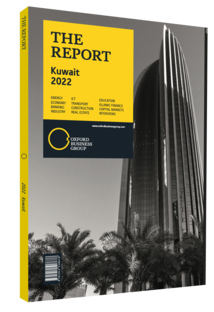How economic zones to boost trade in Kuwait
To leverage its location and proximity to major Gulf markets, Kuwait plans to develop economic zones to attract investment, and support trade and industry clustering. While trade was temporarily disrupted by the Covid-19 pandemic, exports rebounded significantly in 2021. The Middle East currently accounts for a large portion of Kuwait’s external trade, with the UAE and Saudi Arabia being Kuwait’s top non-oil export markets in 2021 and Iraq its fifth. The UAE and Saudi Arabia also ranked second and fifth, respectively, on the list of Kuwait’s top import partners in 2021, while China is Kuwait’s biggest trade partner outside the region.
New Kuwait 2035, the country’s long-term vision supported by medium-term development plans, seeks to diversify the economy beyond hydrocarbons by boosting the private sector and prioritising industrial growth. Trends are moving in the right direction, with manufacturing contributing 7% of GDP in 2020, up from 6% in 2013 and 4% in 2008. The Kuwait National Development Plan 2020-25 emphasises developing economies of scale by aligning and incentivising priority sectors, developing a national industrial strategy and establishing sector-specific industrial parks.
Zone Strategy
The Kuwait Direct Investment Promotion Authority (KDIPA) is tasked with establishing three economic zones – Al Abdali near the border with Iraq in northern Kuwait; Al Naayem, 70 km west of Kuwait City; and Al Wafra, 65 km south of the capital on the route to another border crossing with Saudi Arabia. Some of the intended results of the strategy to develop economic zones are to increase the role of the private sector in the economy from 30% to over 40% by 2035, create 503,000 jobs and increase the number of nationals employed in Kuwait’s private sector to 69%.
The first zone targeted for development is Al Abdali, which would be the country’s first smart sustainable city development. It is intended to act as a gateway for exports to Iraq and the wider GCC, with one of its major advantages being its access to the planned GCC Railway and major motorways. It is close to Kuwait’s most prominent oil fields, making it a potentially attractive location for oilfield services companies, as well as investors in petrochemicals, manufacturing, waste management, logistics and retail. Elsewhere, KDIPA plans to develop the Al Naayem Economic Zone in partnership with the Public Authority for Industry, although planning for this zone is behind Al Abdali and Al Wafra.
Al Wafra
The Al Wafra Economic Zone, covering an area of 7 sq km, is set to cost $250m under plans to cluster innovative and clean industries, making it a centre for high-value exports to the region. After an extension due to the pandemic, the end date for technical bids for Al Wafra’s master plan and infrastructure design was set for March 2021. The $2.6m design consultancy contract was awarded to UAE-based Arab Engineering Consultants in January 2022. The design phase was projected to be completed during the third quarter of 2022, although no updates were available as of early December 2022. The project is scheduled for completion in the first quarter of 2025.
Most of the projects in the development of the economic zones, including Al Wafra, are expected to be done through public-private partnerships, with foreign companies participating in aspects of their engineering, design and construction. To leverage Al Wafra’s export potential – particularly for the GCC – it will be advantageous to strengthen the transport and logistics infrastructure linking the zone to land and seaports.
In October 2022 Kuwait’s Ministry of Finance said it would allocate KD500,000 ($1.65m) to consulting on the development of the GCC Railway, which would eventually extend from Kuwait through Saudi Arabia to Bahrain, Qatar, the UAE and Oman. The economic zones’ proximity to logistics and industrial zones in other GCC countries should attract foreign investors by boosting the potential for cross-border trade. KDIPA will also work to attract foreign direct investment to these zones through Customs and tax incentives.
You have reached the limit of premium articles you can view for free.
Choose from the options below to purchase print or digital editions of our Reports. You can also purchase a website subscription giving you unlimited access to all of our Reports online for 12 months.
If you have already purchased this Report or have a website subscription, please login to continue.

